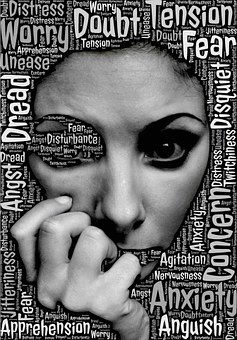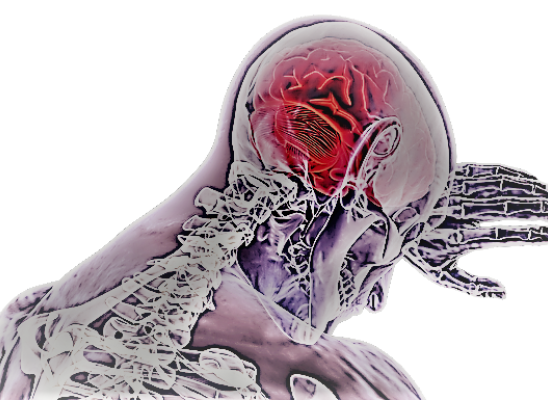Neuro-Linguistic Programming and Trichotillomania
Online test
Find out the severity of your symptoms with this free online test
Body focused repetitive behaviors (BFRB) are a group of behaviors where a person repetitively acts on their body in a way that unintentionally harms themselves or changes their appearance. It can take many forms such as pulling out hair, eyebrows or eyelashes as in a condition called trichotillomania. BFRBs can also take the form of skin picking, nail or cuticle biting or biting the inside of the cheek. BFRBs were previously thought of as impulse control disorders, but has since its inclusion in the Diagnostic and Statistical Manual been classifiedas a disorder related to Obsessive Compulsive Disorders. The individual knows that the behavior can be harmful to themselves but are unable to resist the urge. For some the urge to pull is triggered by stress or anxiety, whereby the individual finds the behavior soothing and will often engage in the activity for long periods of time. As a result, many feel isolated and humiliated afterwards. Trichotillomania often begins during the early teenage years as a stress-coping mechanism. Individuals affected by trichotillomania report the same cycle of feeling anxious, resisting the urge to pull hair, feeling relief after pulling hair then experiencing isolation or distress due to hair pulling. People will this disorder have several noticeable symptoms such as bald spots, twirling of locks of hair or pulling hair through their teeth. In severe situations, individuals may also eat their hair, known as trichophagia and this can lead to further medical problems. Often a trich sufferer will attempt to hide their disorder by wearing hats, scarves and false eyelashes. 
Is there treatment?
Trichotillomania and BFRBs are treated using a medical approach and behavioral therapy. Treatment solely with medications, such as those used to treat depression or obsessive compulsive disorders, has a very low success rate. Treatments with behavior therapies has been shown to have the highest success rate, often as high as 90%. Patients in behavioral therapy learn to identify the triggers that lead to destructive behaviors like hair pulling. They also learn relaxation techniques that they can use when they have an urge to engage in a destruction behavior. Often called “habit reversal training”, it a means of replacing a harmful behavior with one that is less damaging. However it is important to remember that just as the cause of trichotillomania is unique to each person, so too must the treatment be. What works for one person may not neccessarily work for the next. There is not best treatment. While cognitive behavior therapy may show the highest success rate, there are many alternateive therapies that other swear by. The key is to treat the disorder holistically. Understand what your triggers are or how your disorder presents and find the treatment that best addressed those issues. It is also important to remember that not all talk therapy is the same even within the same type of talk therapy. From Psychodynamic therapy to cognitive behavior therapy (CBT), it is important to know the difference when looking for a therapist. Even within each modalities there are differences, so not all cognitive or behavioral therapies are the same. In this post we will be talking specifically about a technique called Neurolinguistic Programming (NLP).
What is Neuro-Linguistic Programming?
Developed in the 1970s by Richard Bandler and John Grinder, neuro-linguist programming (NLP) is a method that is used to enhance communication, personal development and psychotherapy. Practitioners cite a connection between neurological processes, language and behavior. In essence, NLP looks at the thoughts patients have (neuro), the language patterns patients use (linguistic) and the types of behaviors patents engage in (programming). Using NLP techniques, practitioners coach patients to address anxiety issues and develop positive behaviors that will improve their life.
In the treatment of trichotillomania and BFRBs, NLP is often combined with more traditional therapeutic techniques. Conducted by a psychologist or mental health professional, patients can relatively quickly find relief, change their behaviors and gaining a sense of control of their lives.
Patients experiencing long term anxiety issues often engage in thought processes that amplify their fears of the future and perceived dangers so much so that the anxious feelings that arise seem unsurmountable. Destructive behaviors develop as a means to cope with these fears and anxieties. Professionals are able to help patients reframe these thoughts to understand that some stress is a natural human response but that there are better ways to address stress responses and unrealistic expectations. Anxiety about failures can loom so large that it seems inevitable.
How NLP is Used to Treat Trichotillomania and Body Focused Repetitive Behaviors
The seemingly easiest solution to dealing with anxiety induced situations is to avoid that one thing that triggers the anxiety. However, many times this is unrealistic. If a person is afraid of situations where they will not be in total control, they may try to avoid these types of situations. In daily life, though, situations where a person may not be in complete control of everything in their environment is the norm. For patients suffering from Trichotillomania and BFRBs, NLP practitioners offer a series of tools. These tools empower the individuals to be able to help themselves. This creates a supportive, collaborative relationship between the patient and the professional. There are five tools commonly used by NLP professionals to help patients address trichotillomania. These include:
- reframing,
- building inner coping resources,
- developing relaxation skills,
- changing the triggers, and
- developing altering beliefs.

NLP practitioners will work with patients to understand the value of normal human fear. They will work with the patient to identify the causes of their anxiety and their understanding of how this has distorted their view of a threat’s significance. Often, patients who begin to understand what triggers their anxious responses, they are able to change their reaction to it. At times, this may be developing an understanding of what the patients tell themselves in reaction to a stress trigger and changing their internal dialogue or self-talk. NLP practitioners will help patients develop inner coping mechanisms by talking with them about their emotional state. For instance, a patient may be asked to talk about how they deal with problems when they are not engaging in trichotillomania. They may also be asked “miracle’ questions to consider. In this instance, the patient is asked to visualize what their life would be like to the issues were to miraculously disappear. These hypothetical questions allow individuals to consider behaviors that address feelings of anxiety that are not destructive. Trance and physical relaxation techniques allow patients to focus on the physical responses that they have to stress. Breathing techniques and muscle relaxation allows individuals to control rising stress on a daily basis. Patients will also be led through exercises to closely examine the things that trigger their anxiety. This could be considering the one future thing that makes them anxious then ask them to visualize successfully completing that task. This exercise allows the patients to look at fears more realistically and frame them in context. NLP professionals also work to reshape a person’s beliefs with regard to the anxiety triggers. They use several techniques to induce patients to address the causes of irrational fears and understand that the fears are usually unfounded. By recognizing the irrational inner dialogue, they are able to disrupt faulty belief systems, address their anxiety triggers and create more positive responses.
Start with the trigger
Trichotillomania and BFRBs are destructive behaviors that people often use to cope with stress and anxiety. Behavioral therapies, such as those offered by NLP practitioners, can successfully be used to treat patients with these disorders. By determining what triggers the urge to pull, developing positive coping mechanisms and developing a new level of self-acceptance, the patient can reshape their life. Individuals seeking help should contact area psychologists and inquire about using NLP. The Association of Neuro Linguistic Programming can also provide information.
Sources
http://www.webmd.com/anxiety-panic/guide/trichotillomania?page=2
https://en.wikipedia.org/wiki/Neuro-linguistic_programming
http://www.transformations.net.nz/trancescript/nlp-and-the-treatment-of-anxiety.html
http://www.aamft.org/imis15/aamft/Content/Consumer_Updates/Body_Focused_Repetitive_Disorders.aspx
Online test
Find out the severity of your symptoms with this free online test
Start your journey with TrichStop
Take control of your life and find freedom from hair pulling through professional therapy and evidence-based behavioral techniques.
Start Now



